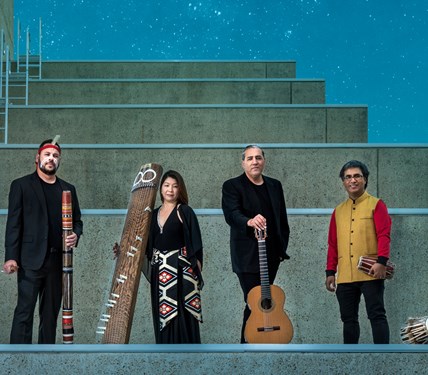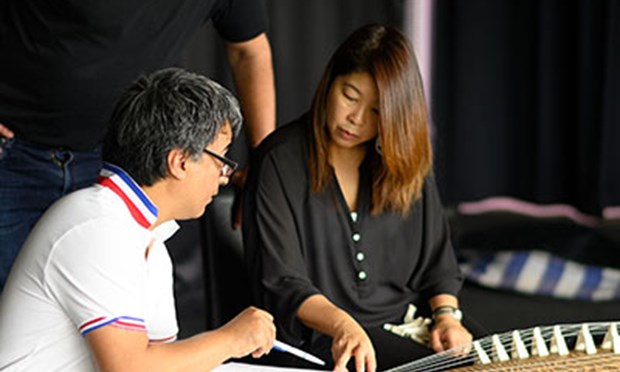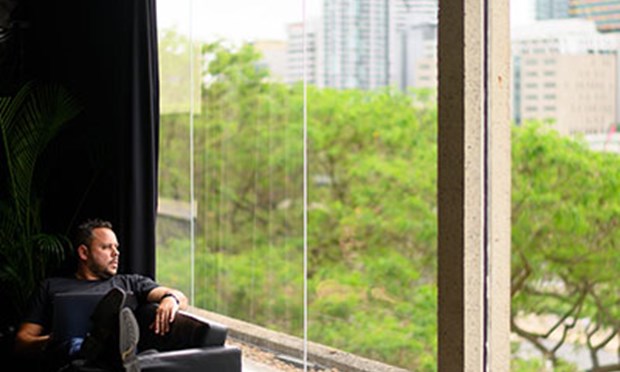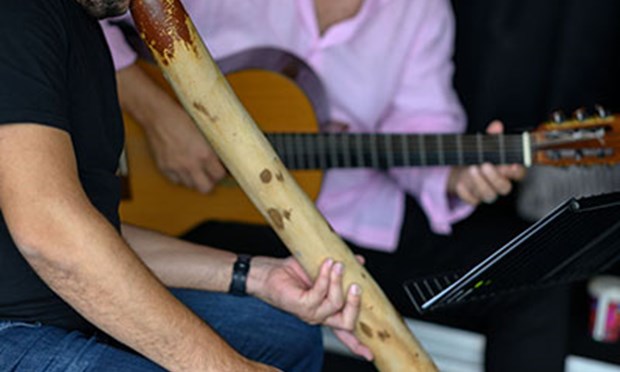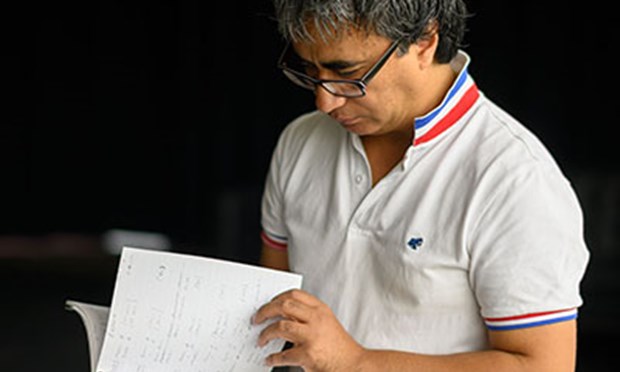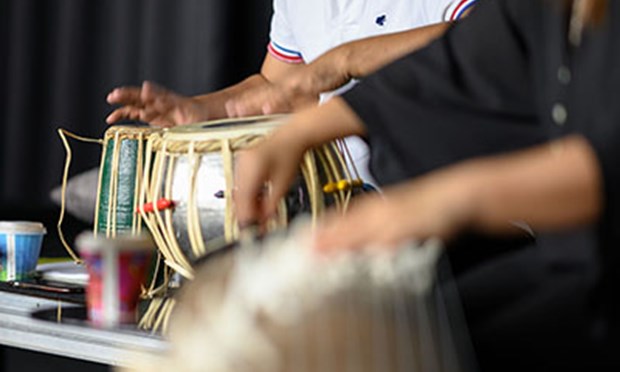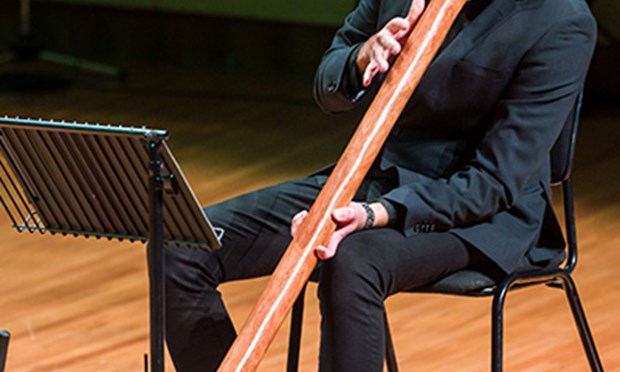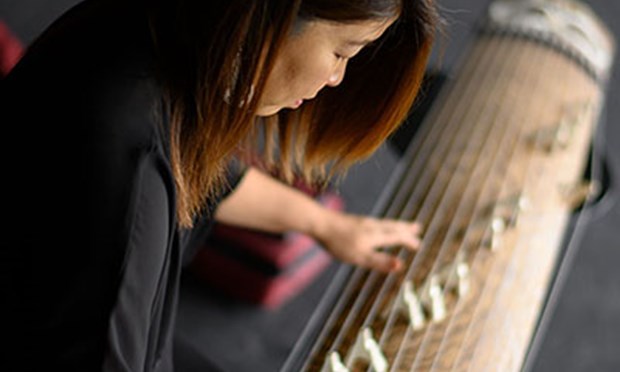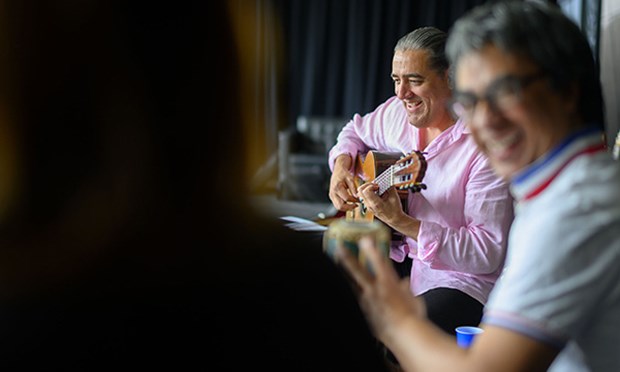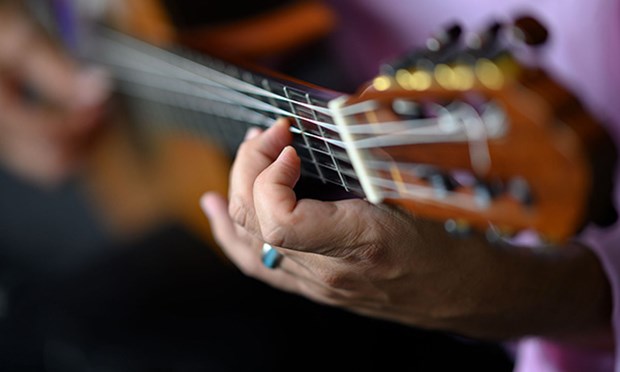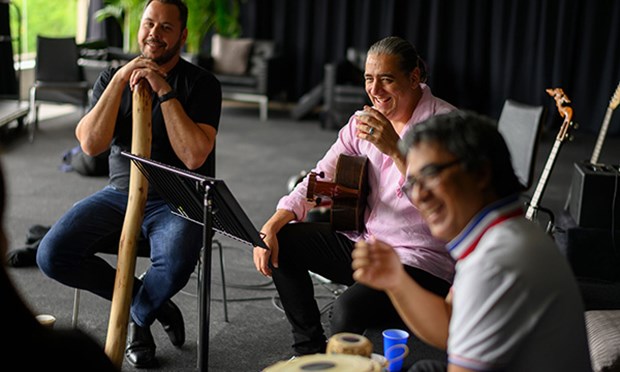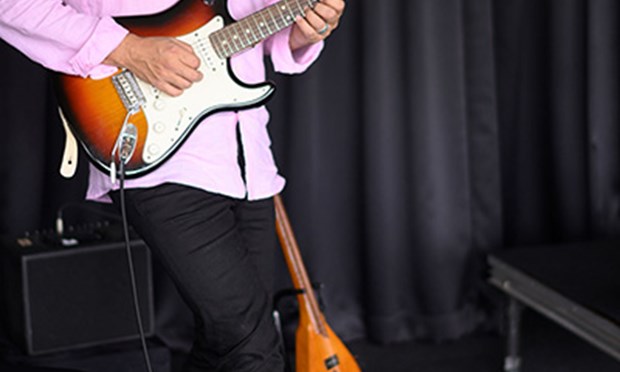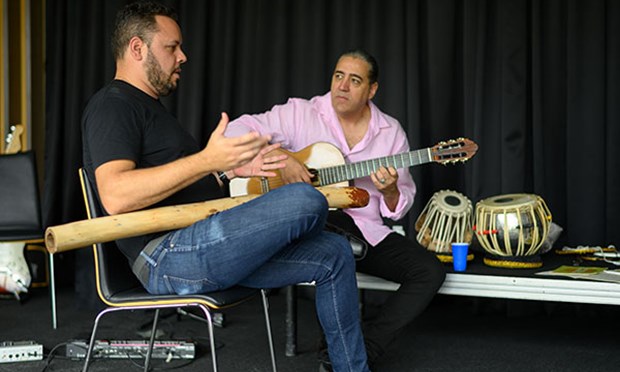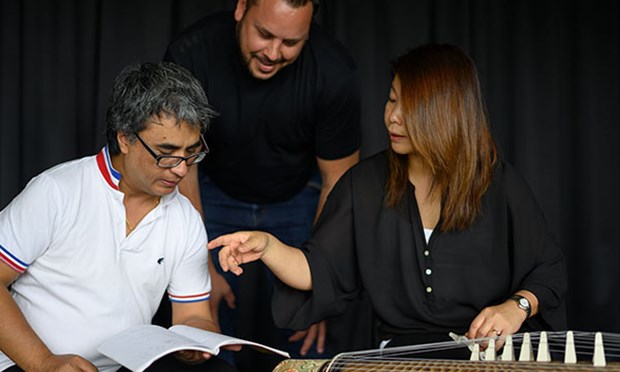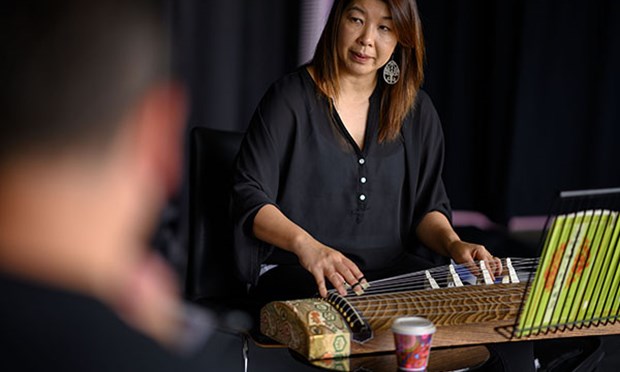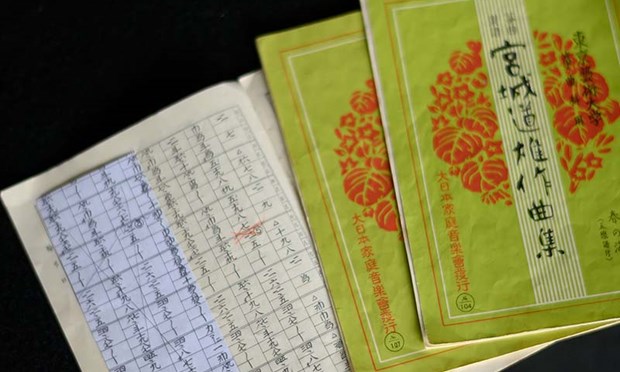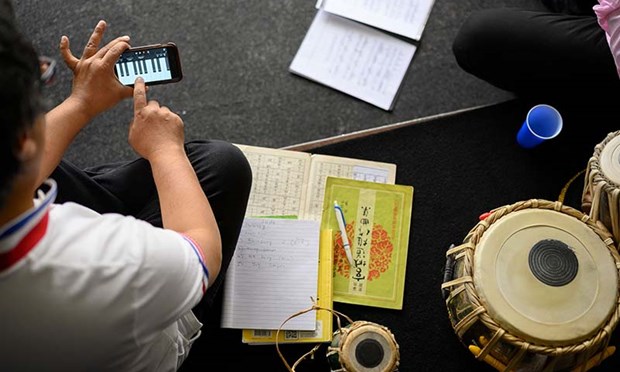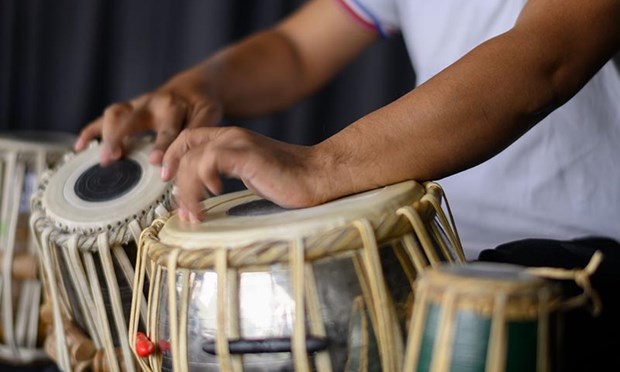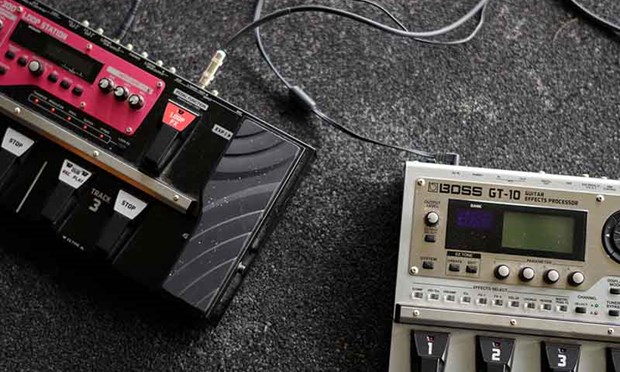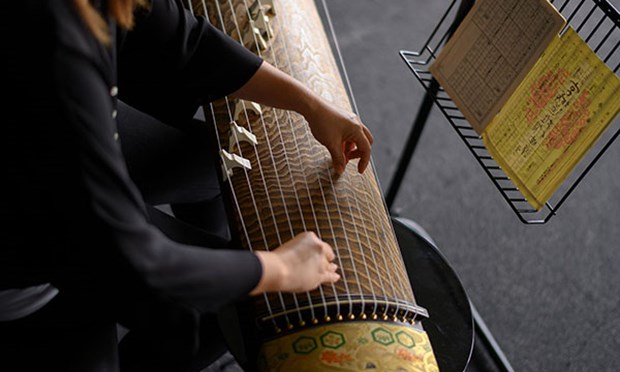JADE New World Collective is QPAC’s Ensemble in Residence. Better known as JADE, the collective was first commissioned and developed by QPAC in partnership with Sounds Across Oceans (SAO) as an initiative to encourage and support collaborations between artists of different backgrounds as well as to produce and perform original music that reflects this collaboration.
Through the partnership with QPAC, there was depth, passion and an authentic desire from all stakeholders to develop this group in a way that was respectful of the cultural traditions of the artists while mindful of the need to present and shape a refined program that was artistically originally and aesthetically attractive,
Not only does JADE embody the diversity and evolving cultural landscape of Brisbane, more importantly the ensemble creates inspiring, uplifting and original music fused with Western classical and traditional Asian elements. Consisting of four core musicians from Queensland, JADE features Indigenous didgeridoo musician David Williams, Japanese koto master Takako Haggarty Nishibori, Nepalese tabla virtuoso Dheeraj Shrestha, and Australian guitarist Dr Anthony Garcia.
Our QPAC team worked closely with JADE to establish the ensemble, launch their first suite of new music – featuring 12 original compositions and music arrangements – and present their first public performance Crystal Moonlight in the Cremorne Theatre in 2019. The premiere concert featured guest artists, Pongsaporn Upani from Thailand, Charulatha Mani from India and Noralyn from Philippines.
Throughout its development, it was particularly important for JADE to determine a practice of collaboration and co-creation which require significant faith in the abilities of your fellow artists, the sharing of strengths to inspire bigger ideas. Through our partnership, they were able to strike a balance between differing cultural arts practices that saw them successfully weave together the music of our First Nations Peoples with Western sounds and traditional Asian soundscapes.
Ultimately, it was artistic collaboration that drove this project. The artists all grew through the process of creating new music together and were surprised and thrilled with the artistic outcome and value of the music presented,
JADE received funding through Arts Queensland to support the delivery of their launch and premiere concert.
Meet the Artists
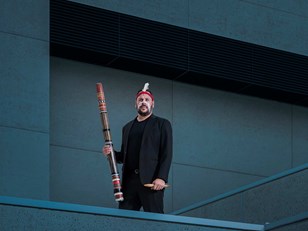
David Williams
A proud Wakka Wakkaman born in Rockhampton, David is an internationally renowned didgeridoo performer having spent the last 15 years performing locally, nationally and internationally. Classically trained from an early age in Piano and Trombone, David had chosen a career path later in life that was reflective of his upbringing, learning traditional songs from his grandmother and a strong influence from his uncles and aunties, of sharing and celebrating the culture of his people. David’s skills as a didgeridoo player have taken him around the world performing in various markets in Europe, North and South America, and Asia with a highlight performing at the opening ceremony of the 2008 Beijing Olympic Games to an estimated audience of 4 billion people and the Gallipoli ANZAC Dawn service opening in 2016. Through David’s didgeridoo performances, he aims to further educate and encourage a wider understanding and appreciation of Aboriginal culture.
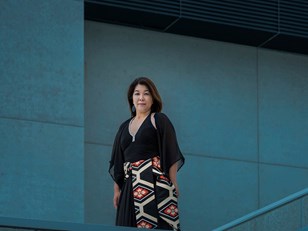
Takako Nishibori
Queensland’s eminent Koto performer, Takako Nishibori brings the classic sounds of Japan alive through her mastery of the Koto. Born in Otsu, Shiga Japan Takako started playing the Koto at the age of six. Takako studied the Koto with Grand Master Shizu Fujino (a student of Michio Miyagi) from Ikuta Ryu Miyagi school and commenced her studies of the Shamisen at the age of 16. In 2000, Takako received her teaching license from the Miyagi school of Tokyo and was placed in the top ten for all of Japan. Takako’s first visit to Australia was in 2001 as an exchange teacher. During this time, she performed for various venues in NSW and ACT and began to explore new ways of playing the Koto. After returning to Japan, Takako moved to Newcastle in order to commence a Masters of Educational Studies. Upon completing her study, she moved to Brisbane in 2005. As a language teacher Takako has developed practical language methods through music teaching that some schools still employ.
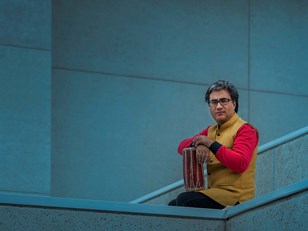
Dheeraj Shrestha
Internationally acclaimed Nepalese born Dheeraj Shrestha is recognised as the foremost Tabla player in Australia. An irrepressible creativity, tremendous clarity and exciting rhythmic improvisation are his stylistic hallmarks, and this has established him, worldwide, as one of the finest exponents of Tabla in classical and world music. Dheeraj Shrestha’s hometown, Kathmandu, Nepal stands on the ancient route leading from the Himalayan Mountains down into the valley of Kathmandu. His real relationship with music began when he was five years old listening to classical music by his father. Later he started formal training on Tabla with his guru Pt. Hom Nath Upadhyaya. His father used to take him to play traditional temple music near his home. He was the only child among all the master musicians who were performing at the courtyard temple music.
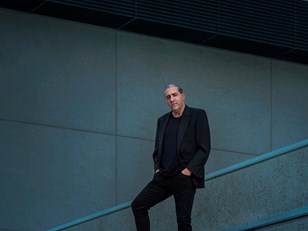
Dr Anthony Garcia
Dr Anthony Garcia is an acclaimed guitarist, composer and educator based in Brisbane. Born in the United States and raised and educated in Southeast Asia, Australia and Mexico, Garcia has recorded, performed, and collaborated extensively throughout the world with creatives across a diverse range of artistic disciplines. His passion for unifying the interlocking fields of performance, composition, education and festival curation led to the establishment in 2014 of Sounds Across Oceans, a new music organisation dedicated to exploring ‘the multidimensional capacity of music and the arts to create and share new ideas, uplift, heal, shift energies and ignite new perspectives’.
Discover the Instruments
Discover the history behind each instrument played by JADE’s core ensemble that contribute to the distinct sound of the ensemble.
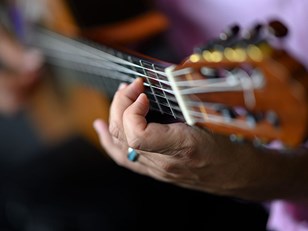
Classical Guitar
The word guitar comes from the Spanish word “guitarra” and is known to have originated during a cultural movement of the Moors from global Islamic regions to Spain. In contrast to its opulent brother instrument – the lute, guitars were first regarded as mere folk instruments played only by the lower class. It was not until the Baroque era in Spain (17th century) that composers introduced the instrument into the royal courts. Between then and now, the guitar has developed greatly in size, construction, repertoire and playing technique.
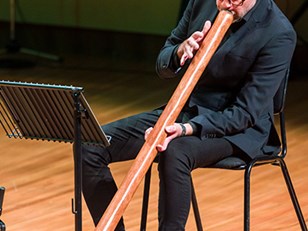
Didgeridoo
Typically, the didgeridoo is a 1.5-metre-long indigenous wind instrument, traditionally made of eucalyptus wood hollowed by termites. It is believed to be the world’s oldest music instrument, over 40,000 years old. Conventionally only men play the didgeridoo during ceremonies, although female players are still found playing outside of ceremonial contexts. Artists employ the circular breathing technique to produce a continuous tone from the didgeridoo – that is breathing in through the nose and simultaneously breathing out with the air stored in the cheeks. This produces an earthy sound, and often includes mimicry of the sounds of Australian wildlife.

Koto
The Koto was first introduced to Japan from China in the 8th century. For a long time, this instrument was played exclusively to the members of the royal court. However, in the 17th century it was popularised by a blind Shamisen player, Yatsohashi Kengyo, and normalised as a solo instrument. The Koto has a large 2 metre body, over which thirteen silk strings are stretched. They are plucked using picks worn on the artists’ fingers. Today it is played either as a solo performance or in accompaniment.
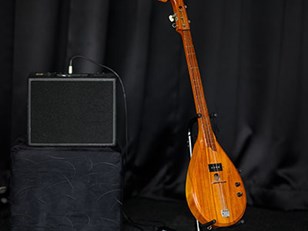
Phin
The Phin is a lute from Northeastern Thailand. Originally derived from the South Indian Veena, this instrument is typically played by ethnic Laotians in Thailand and Laos. The Phin has a wooden spade-shaped body, with three to four strings attached along its neck. Some are also sold with a detachable dragonhead carving that may be mounted onto the headstock.
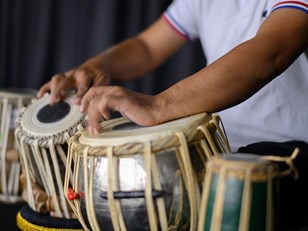
Tabla
Like many Indian instruments, there is little clarity around the specific origins of the tabla. Many believe it to have been founded by the Indian poet and musician Amir Khusro in the 13th century. Historically this instrument has been played by musicians from Northern India, Nepal and the Middle East. A set of tablas contains a bass drum (Bayan) made of metal, and a small hollow drum (Dahina) made of wood. Both are covered with a layer of stretched goat skin across the top. What brings out a range of sounds unique to the tabla, is the dry black paste (Shyahi) painted in a circle atop each drum.
Meet the Guest Artists
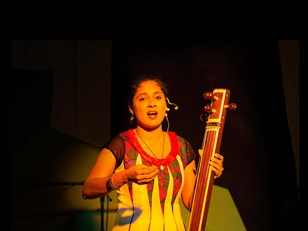
Charulatha Mani
Charulatha Mani is a leading Carnatic music vocalist and has a huge fan following in India and abroad. Gifted with a rich, melodious voice, and amazing creativity she has a vast repertoire of compositions of various genres, and this has made her one of the most popular and renowned artistes of today. Charu initially trained under her mother Smt Hemalatha Mani, Veena artiste, and later trained under vidwans Sri Sandhyavananam Srinivasa Rao, and Calcutta K. S. Krishnamurthy.

Noralyn
Brisbane based alternative-pop singer songwriter, Noralyn, brings evocative lyrics and melodious hooks to life with a unique, emotive voice and distinctly piano-driven style which often draws comparisons to the likes of Kate Bush and Tori Amos. Noralyn has released two EP's: Lucid Dreaming (2018) and Mercy in Madness (2017).

Pongsaporn Upani (aka On)
Pongsaporn Upani (aka On) is a traditional Thai reed mouth organ (Khaen) player from Khon Kaen Thailand. His performance style, inspired by a deep inherited tradition of Isan folk music from Northeast Thailand, fuses seamlessly with contemporary styles and genres, giving him a rare capacity to work across cultures and art forms. His extensive career as a performing artist has seen him present as a soloist and in collaboration with other artists throughout Thailand and internationally in North America, Asia and Europe.
You May Also Like
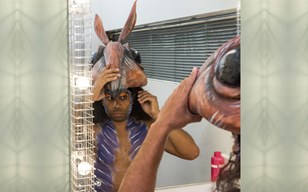
Behind the Scenes
Our Behind the Scenes series takes you on an exclusive journey into the heart of QPAC, where the magic of the stage comes to life.
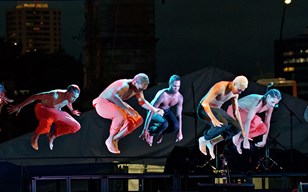
First Nations
Our First Nations program is bold, resilient, and features fierce black work from local, regional and national First Nations artists.

Support
Support QPAC to help nurture and celebrate Queensland's rich artistic heritage while fostering innovation and creativity for the future.

Projects and Events
QPAC is more than a venue; it's a creative hub where communities come together to celebrate, learn, and grow through the transformative power of the arts.

